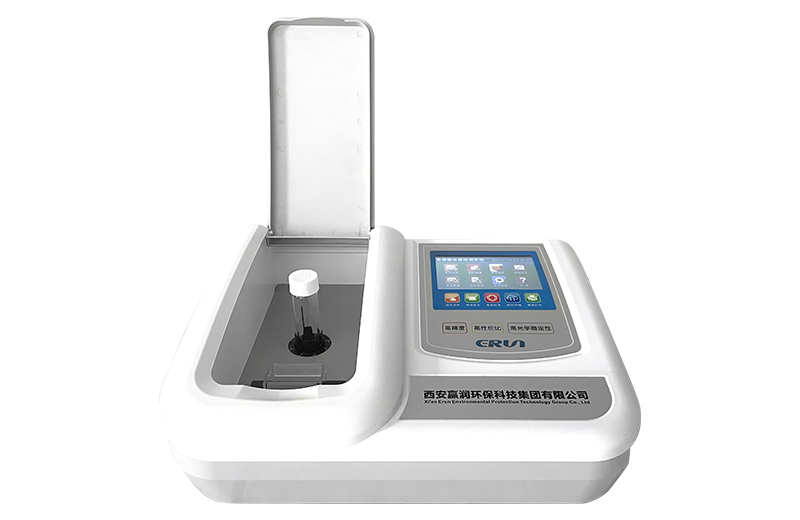In the field of environmental protection and water quality monitoring, chemical oxygen demand (COD) is an important indicator used to assess the concentration of organic pollutants in water bodies. As a commonly used analytical instrument, the core function of the COD detector is to accurately measure the chemical oxygen demand in water samples, thereby providing a basis for water quality evaluation and pollution control. This article will elaborate on the working principle, operation method and application scenarios of the COD detector to help readers deeply understand this detection technology.
1.COD Working principle of the detector
The COD detector is mainly based on the chemical oxidation method. It uses a strong oxidant to oxidize the organic matter in the water sample into inorganic matter, and at the same time measures the amount of oxidant consumed in the oxidation process, and then calculates the chemical oxygen demand of the water sample.
The laboratory tabletop water quality chemical oxygen demand COD detector ERUN-97-C1 developed and produced by Erun Environmental Protection has the following detection principles: a certain amount of potassium dichromate is added as an oxidant to a strong acid solution. Under the action of a special composite catalyst, it is heated and digested at a constant temperature of 165°C for 15 minutes. Potassium dichromate is reduced to trivalent chromium by organic matter in the water. The content of hexavalent chromium/trivalent chromium ions is measured at a wavelength of 420nm (low range) or 610nm (medium/high range), and then the mass concentration of oxygen consumed is calculated based on the content of hexavalent chromium/trivalent chromium ions.

2.COD How to operate the detector
When using a COD detector for water quality analysis, the operator needs to follow certain steps and precautions. First, prepare the required reagents and standard solutions, including potassium dichromate or potassium permanganate solution, silver sulfate catalyst, sulfuric acid, etc. Secondly, take an appropriate amount of water sample and place it in a reaction bottle, and add an appropriate amount of reagent. Next, place the reaction bottle in a heating device and heat it to reflux according to the set program. Finally, depending on the selected method, titration or colorimetry is used to determine the remaining oxidant amount to calculate the COD value.The instrument adopts the digestion colorimetric method and is equipped with a special digestion instrument. After the blank sample and water sample are digested, they can be put on the machine for colorimetry after waiting for the liquid in the tube to cool down.
During the operation, the operator should ensure the accurate preparation and addition of reagents to avoid cross contamination. At the same time, pay attention to controlling the heating temperature and time to ensure the complete oxidation reaction. In addition, the instrument should be calibrated and maintained regularly to ensure the accuracy and reliability of the test results.
3.COD Application scenarios of the detector
COD detectors are widely used in environmental monitoring stations, sewage treatment plants, chemical plants, food processing plants and other places to monitor and control the content of organic pollutants in industrial wastewater, domestic sewage and surface water. By regularly testing COD values, relevant departments and enterprises can understand the water quality in a timely manner and take corresponding treatment measures to protect water resources and the ecological environment.
At environmental monitoring stations, COD detectors are an important part of routine water quality analysis, helping to assess the degree of pollution and self-purification capacity of water bodies. In sewage treatment plants, COD detectors are used to monitor treatment effects and guide process adjustments. In the chemical and food processing industries, COD detectors help companies comply with emission standards and reduce negative impacts on the environment.
In summary, COD detector is a key water quality analysis tool. Its scientific principles, standardized operation methods and wide application scenarios make it an indispensable device for environmental protection and water quality monitoring. Through accurate measurement of COD, we can better understand and manage the quality of water resources and contribute to maintaining ecological balance and human health.